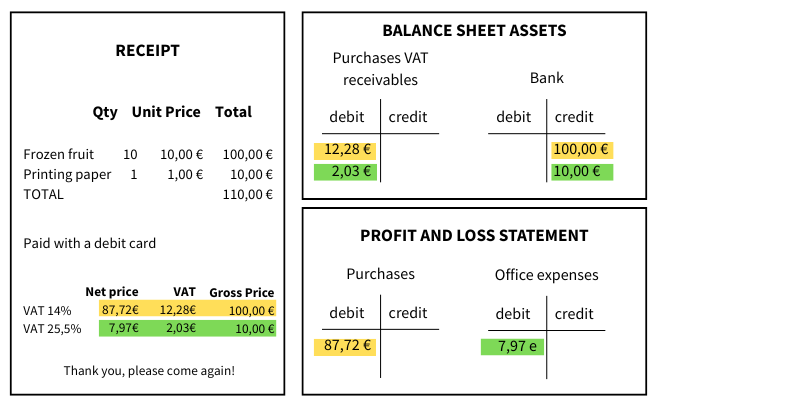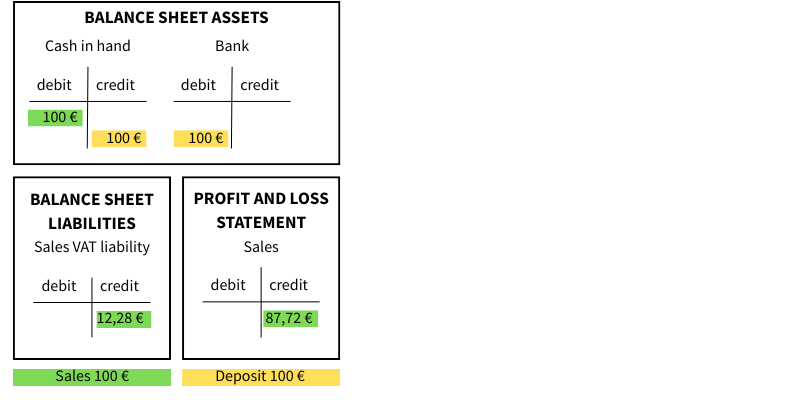Debit and credit – where money goes and where it comes from (0)
In the secret language of accounting, the terms debit and credit are used. In an even more secret dialect, they are called per and an. If you want to casually chat with an accounting guru and sound smart, sprinkle these words here and there. You’ll make an even better impression if you use them in the right places!
Both sides of an accounting account
Every account in accounting has two sides. On the left is the debit side, which shows where the money goes, and on the right is the credit side, which shows where the money comes from. When double-entry bookkeeping is used, each transaction is recorded on the debit side of one or more accounts and on the credit side of one or more accounts. The amounts must always be equal on both sides.
Debit
In accounting, expenses are always recorded on the debit side — that is, where the money went. This could be purchases, salaries, insurance, car expenses — anything at all. Whenever money is spent on something, it belongs in the debit column.
|
EXAMPLE
An entrepreneur buys frozen fruit wholesale for the preparation of drinks for sale, as well as printing paper. The frozen fruit costs 100 euros and the paper costs 10 euros, including VAT. The entrepreneur pays for the purchases with the company’s bank card.
Receipt entry
|
Software makes it easier
Depending on the software, you might not need to manually record the VAT portion separately. In SimplBooks, entries are made with the VAT-inclusive amount, and the system automatically calculates the VAT and posts it to the correct account. You just need to be careful to select the right VAT rate for each transaction. The software then calculates the VAT and posts it to the right account automatically.
Credit
Credit shows where the money came from. If you buy something, the purchases go into debit, and credit shows how you paid for them. If you deposit money into the company’s bank account, the money goes into the bank account’s debit, and credit shows the source. Sales are always recorded in credit.
|
EXAMPLE
An entrepreneur sells drinks for 100 euros in cash (money comes from sales and goes to the cash register).
Sales entry
The entrepreneur deposits the cash into a bank account (money comes from the cash register and goes to the bank account).
Cash deposit into a bank account entry
|
Debit and credit aren’t difficult if you don’t overthink them. When deciding which side to use, think about whether the account balance increases or decreases, and remember that sales increase in credit while the bank account increases in debit.And now, the secret of per and an can be revealed: per means debit, an means credit. In spoken language, you might say: “Record the frozen fruit per purchases VAT 14% an bank account,” and the listener will instantly understand – or at least pretend to.
Try right away!
A more advanced and easy accounting software SimplBooks with over 10,000 active users - register an account and you can try 30 days free of charge and risk-free (no financial obligations shall arise). Or try our demo version!








Leave a Reply